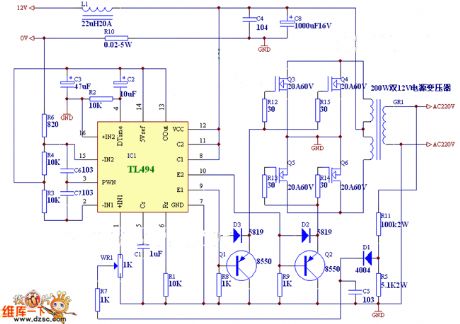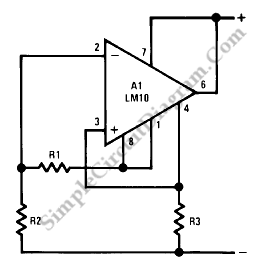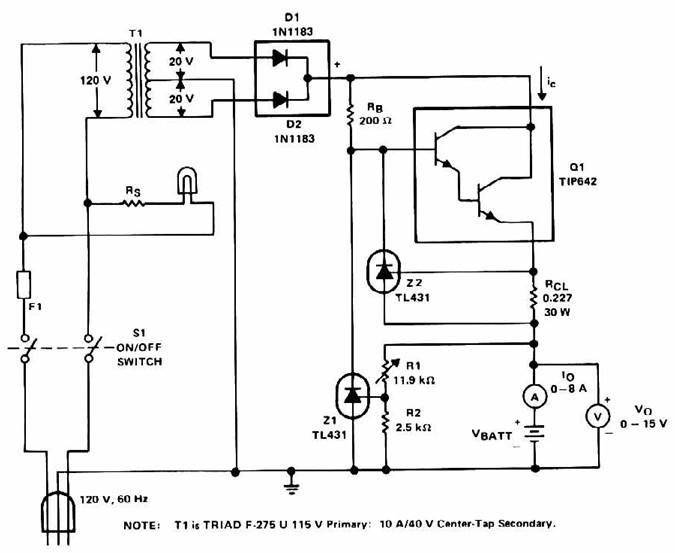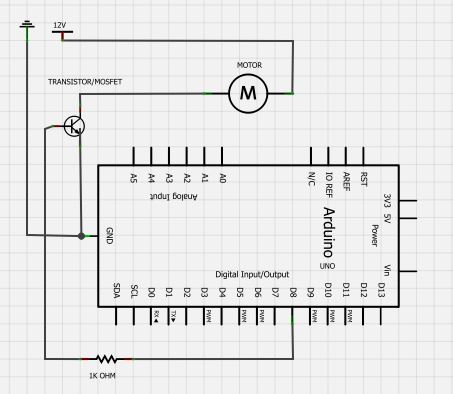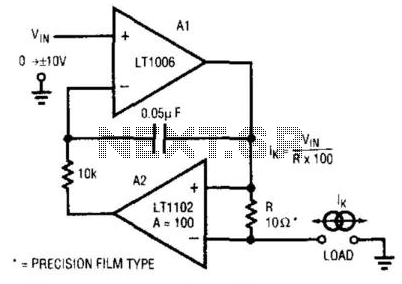
Current Source
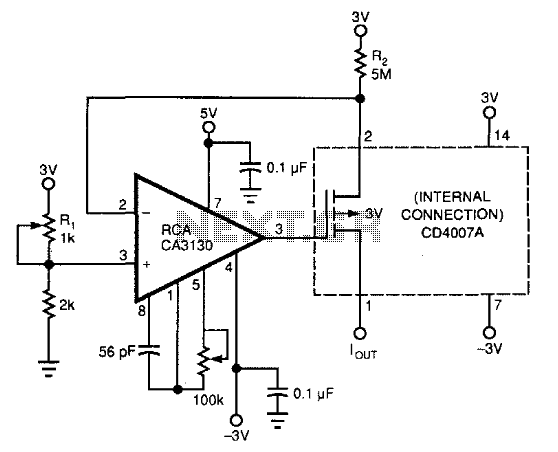
This circuit utilizes commonly available components to create a 0-to-200-nA current source. It incorporates a PMOS transistor from the input stage of a DC4007A, which is more accessible than a standalone PMOS transistor. The CA3130 operational amplifier functions as a voltage follower, with its positive input determining the current that flows through resistor R2. The MOSFET input stage of this operational amplifier features low input current. The operational amplifier must generate an output voltage sufficient to deactivate the internal FET of the CD4007A. Therefore, a positive supply voltage of 5 V is necessary for the operational amplifier. The circuit provides an output voltage range of 0 to 3 V, with resistor RI regulating the output current.
This circuit effectively demonstrates the implementation of a low-current source using readily available components, making it suitable for applications that require precise current regulation. The choice of the CA3130 operational amplifier is significant due to its low input bias current, which is crucial for maintaining accuracy in low-current applications. The operational amplifier’s configuration as a voltage follower ensures that the output voltage closely follows the input voltage, thereby allowing for precise control over the current flowing through R2.
The PMOS transistor selected from the CD4007A is advantageous due to its integrated nature, reducing the need for additional discrete components. This integration minimizes the circuit's footprint and simplifies the design process. The operational amplifier's output must reach a level sufficient to turn off the internal FET of the CD4007A, necessitating the 5 V supply voltage. This requirement ensures that the circuit operates efficiently within its desired parameters.
The output voltage range of 0 to 3 V is particularly useful in applications requiring low current levels, such as sensor biasing or precision analog signal processing. The resistor RI serves as a critical component in controlling the output current, providing flexibility in adjusting the current output as needed. Overall, this circuit design exemplifies an efficient approach to creating a low-current source suitable for various electronic applications. This circuit uses readily available parts to implement a 0-to-200-nA current source. The circuit borrows a PMOS transistor from the input stage of a DC4007A, which is easier to obtain than a discrete PMOS transistor. The CA3130 op amp operates as a follower so that its positive input sets the current that flows through R2.
The MOSFET input stage of this op amp exhibits low-input current. The op amp must be able to produce an output voltage high enough to turn the CD4007A"s internal FET off. Thus, the op amp requires a positive supply voltage of 5 V. The circuit presents an output voltage from 0 to 3 V, and RI controls the amount of output current.
This circuit effectively demonstrates the implementation of a low-current source using readily available components, making it suitable for applications that require precise current regulation. The choice of the CA3130 operational amplifier is significant due to its low input bias current, which is crucial for maintaining accuracy in low-current applications. The operational amplifier’s configuration as a voltage follower ensures that the output voltage closely follows the input voltage, thereby allowing for precise control over the current flowing through R2.
The PMOS transistor selected from the CD4007A is advantageous due to its integrated nature, reducing the need for additional discrete components. This integration minimizes the circuit's footprint and simplifies the design process. The operational amplifier's output must reach a level sufficient to turn off the internal FET of the CD4007A, necessitating the 5 V supply voltage. This requirement ensures that the circuit operates efficiently within its desired parameters.
The output voltage range of 0 to 3 V is particularly useful in applications requiring low current levels, such as sensor biasing or precision analog signal processing. The resistor RI serves as a critical component in controlling the output current, providing flexibility in adjusting the current output as needed. Overall, this circuit design exemplifies an efficient approach to creating a low-current source suitable for various electronic applications. This circuit uses readily available parts to implement a 0-to-200-nA current source. The circuit borrows a PMOS transistor from the input stage of a DC4007A, which is easier to obtain than a discrete PMOS transistor. The CA3130 op amp operates as a follower so that its positive input sets the current that flows through R2.
The MOSFET input stage of this op amp exhibits low-input current. The op amp must be able to produce an output voltage high enough to turn the CD4007A"s internal FET off. Thus, the op amp requires a positive supply voltage of 5 V. The circuit presents an output voltage from 0 to 3 V, and RI controls the amount of output current.
